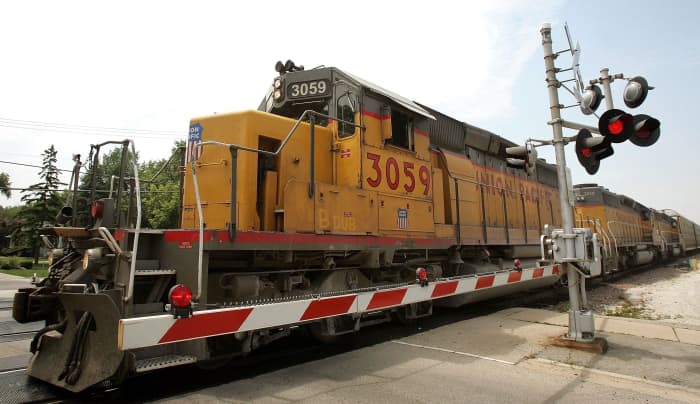
Most coffee shops have customers who drop in occasionally and Starbucks has a boss who does the same. Howard Schultz started his third stint in 35 years as chief executive this week with a pledge to restore the heart of a global chain that grew from one café in Seattle.
“We are longing for love, to be embraced, to be valued, to be cared for . . . Over a cup of coffee, we bring people together,” he told a gathering of employees, many of whom are feeling unloved themselves. His first act was to suspend share buybacks and attempt to quell discontent that has led to baristas at several US stores joining a union.
His vision of Starbucks cafés as comforting “third places” beyond home and work, at which locals can gather to chat over coffee prepared by passionate experts, is familiar. He said something similar last time he took back control, in 2008. Even Schultz admits that his platonic ideal has “kind of been dissipated in the last few years”.
Some of the pressures it faces are common to other businesses. Supply chains are stretched, and raw material prices are rising. Many US companies are struggling to recruit and retain staff after the “great resignation” of the pandemic. Discontented employees want better pay and conditions: Amazon workers at a New York warehouse voted to unionise last week.
But Starbucks has a problem of its own concoction among its staff. Ray Oldenburg, the sociologist who popularised the notion of the “third place”, lauded cafés and hostelries for easing “the atomisation of life” in urban America. The burden on today’s baristas is the atomisation of the Frappuccino.
One of these blended iced drinks became notorious last year when Starbucks fired a barista for tweeting an image of the “Edward”, named after the customer for whom he had to mix it. The Venti Caramel Ribbon Crunch Frappuccino with 13 modifiers (Starbucks’ term for additions) included five bananas, seven pumps of caramel sauce and extra cinnamon dolce topping.
The Edward is a Frankenstein’s monster of mass customisation but it is not unique. In Schultz’s mind, baristas may work in cafés crafting their espresso crema. In reality, they are often at drive-through stations, pumping extra shots of syrup and cream into White Chocolate Mocha Frappuccinos.
There are 170,000 ways to customise drinks at Starbucks stores, including all the multicoloured, off-menu blends that Gen Z customers request before posting videos on TikTok. Flavour diversity has been made easier by the Starbucks mobile app, which allows customers to pre-order crazy combinations to pick up, without having to face a resentful barista in person.
Frappuccinos have been around since 1995, during Shultz’s initial tenure as CEO, but have proliferated in recent years. Cold drinks, including cold brew coffee, iced lattes and Frappuccinos, accounted for 70 per cent of US sales last year, up from half in 2018.
That is deliberate. Schultz last retook the helm amid the coffee wars of the mid-2000s with McDonald’s and Dunkin’ Donuts, when Starbucks was being undercut by cheaper cappuccinos. Since then, it has regained its premium — and grown around the world to 34,000 outlets — by offering higher priced, individual beverages.
Starbucks has changed in another way. The pandemic shift to working from home and population movement to suburbs mean that many Americans no longer linger in city centre stores, such as its original café in Pike Place Market, Seattle. They are more likely to grab a frothy drink at a drive-through.
The company has closed 420 US stores and is opening new drive-throughs and walk-by “pick-ups” for pre-ordered drinks: 45 per cent of outlets will be in such formats by next year. These are designed to satisfy individual consumer preferences, but communal third places they are not.
Nor is this a recipe for employee happiness: it all tends to make the barista’s job more stressful and less fulfilling. Many complain of overwork from having to juggle a flow of digital and in-person orders, while blending ever more fancy Frappuccinos. The personal touch is reduced to hailing customers through windows, or on screens.
Schultz is going on a listening tour to restore “kindness and joy” to his alienated baristas. I suspect he will hear that they feel like the face of a machine, with the artificial intelligence software in its mobile app advising customers digitally while they provide a thin layer of humanity at the front end.
Starbucks has historically been a good employer. It stood out among quick-service chains in offering its staff healthcare, educational and parental benefits, as well as share ownership. It has increased hourly wages to an average of $17 in the face of the union drive, and Schultz this week promised to “do better for our partners”.
But the discontent goes deeper than money. BMW has called time on letting buyers endlessly customise their cars, and I advise Schultz to do the same for Frappuccinos. Otherwise, no matter how sweet the vision, his baristas will not feel cared for.
john.gapper@ft.com










